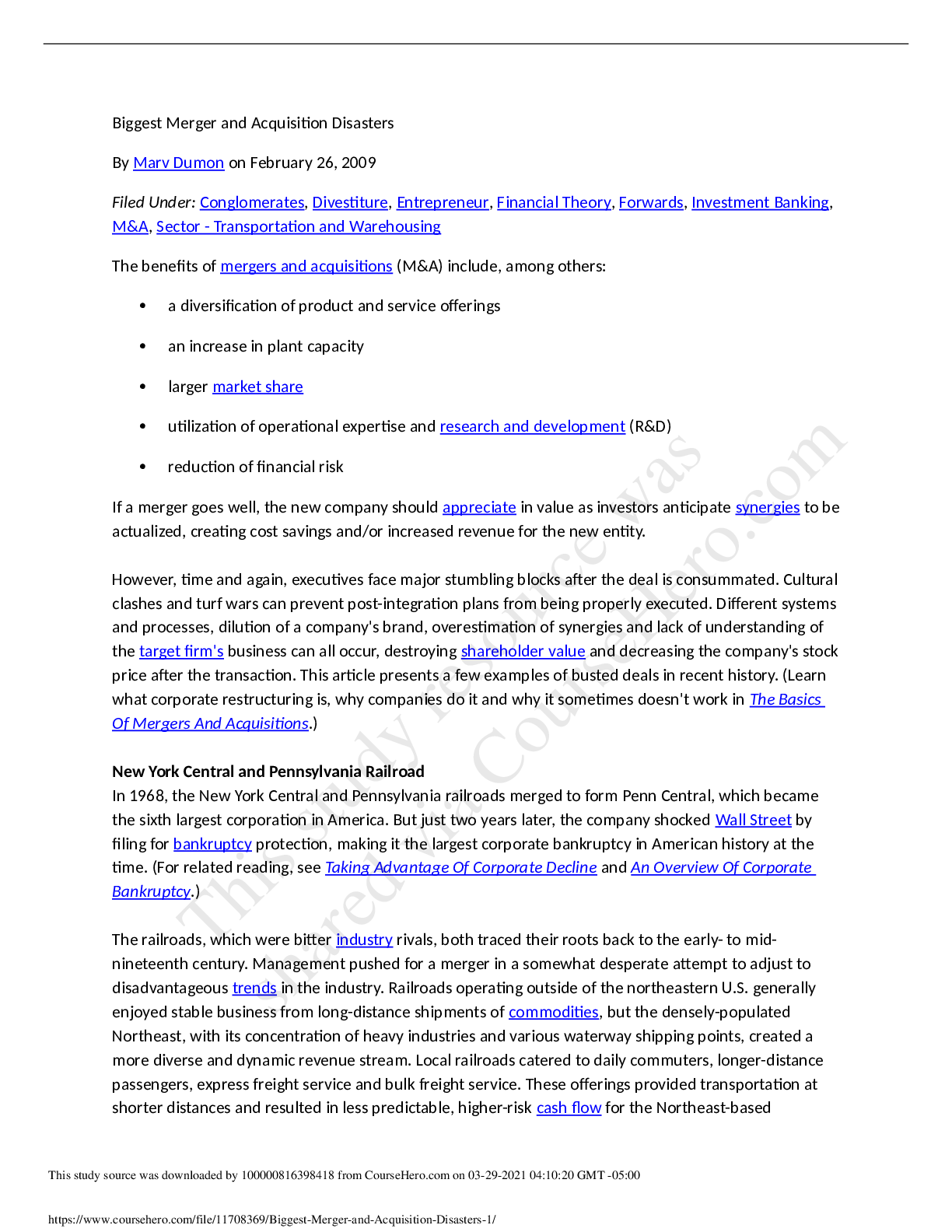Accounting > STUDY GUIDE > Strayer University, Washington - ACC 499Biggest Merger and Acquisition Disasters (1) (All)
Strayer University, Washington - ACC 499Biggest Merger and Acquisition Disasters (1)
Document Content and Description Below
Biggest Merger and Acquisition Disasters By Marv Dumon on February 26, 2009 Filed Under: Conglomerates, Divestiture, Entrepreneur, Financial Theory, Forwards, Investment Banking, M&A, Sector - Tran... sportation and Warehousing The benefits of mergers and acquisitions (M&A) include, among others: a diversification of product and service offerings an increase in plant capacity larger market share utilization of operational expertise and research and development (R&D) reduction of financial risk If a merger goes well, the new company should appreciate in value as investors anticipate synergies to be actualized, creating cost savings and/or increased revenue for the new entity. However, time and again, executives face major stumbling blocks after the deal is consummated. Cultural clashes and turf wars can prevent post-integration plans from being properly executed. Different systems and processes, dilution of a company's brand, overestimation of synergies and lack of understanding of the target firm's business can all occur, destroying shareholder value and decreasing the company's stock price after the transaction. This article presents a few examples of busted deals in recent history. (Learn what corporate restructuring is, why companies do it and why it sometimes doesn't work in The Basics Of Mergers And Acquisitions.) New York Central and Pennsylvania Railroad In 1968, the New York Central and Pennsylvania railroads merged to form Penn Central, which became the sixth largest corporation in America. But just two years later, the company shocked Wall Street by filing for bankruptcy protection, making it the largest corporate bankruptcy in American history at the time. (For related reading, see Taking Advantage Of Corporate Decline and An Overview Of Corporate Bankruptcy.) The railroads, which were bitter industry rivals, both traced their roots back to the early- to midnineteenth century. Management pushed for a merger in a somewhat desperate attempt to adjust to disadvantageous trends in the industry. Railroads operating outside of the northeastern U.S. generally enjoyed stable business from long-distance shipments of commodities, but the densely-populated Northeast, with its concentration of heavy industries and various waterway shipping points, created a more diverse and dynamic revenue stream. Local railroads catered to daily commuters, longer-distance passengers, express freight service and bulk freight service. These offerings provided transportation at shorter distances and resulted in less predictable, higher-risk cash flow for the Northeast-based [Show More]
Last updated: 2 years ago
Preview 1 out of 5 pages

Buy this document to get the full access instantly
Instant Download Access after purchase
Buy NowInstant download
We Accept:

Reviews( 0 )
$7.00
Can't find what you want? Try our AI powered Search
Document information
Connected school, study & course
About the document
Uploaded On
Mar 29, 2021
Number of pages
5
Written in
Additional information
This document has been written for:
Uploaded
Mar 29, 2021
Downloads
0
Views
59













